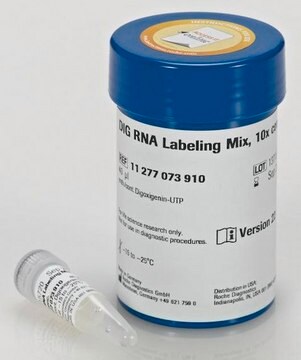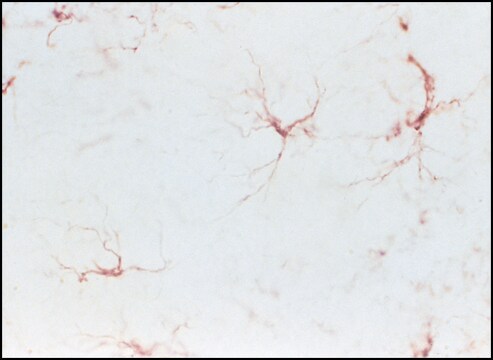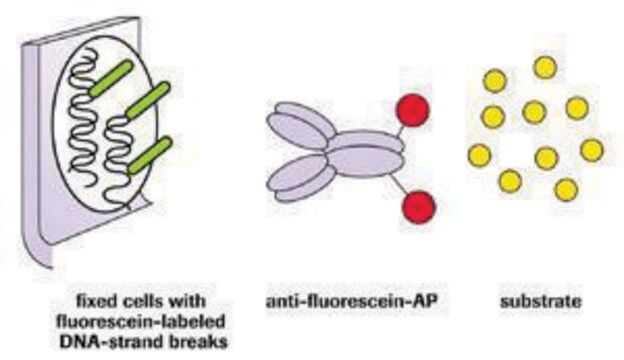11427857910
Roche
Fluorescein-12-UTP
≥85% (HPLC), solution
Synonym(s):
Fluorescein-12-UTP tetralithium salt, Fluorescein-5(6)-carboxamidocaproyl-(5-[3-aminoallyl]uridine 5′-triphosphate)
About This Item
Recommended Products
Quality Level
Assay
≥85% (HPLC)
form
solution
mol wt
1034.4
packaging
pkg of 25 μL (250 nmol; 10 mM)
manufacturer/tradename
Roche
storage temp.
−20°C
Looking for similar products? Visit Product Comparison Guide
General description
Typical analysis: At least 85% Fluorescein-12-UTP (HPLC, area%).
Application
Labeled RNA can be subsequently detected by in situ hybridization and direct fluorescence detection or detection by ELISA using Anti-Fluorescein-AP, Fab fragments or Anti-Fluorescein-POD, Fab fragments.
Other Notes
Storage Class Code
12 - Non Combustible Liquids
WGK
nwg
Flash Point(F)
does not flash
Flash Point(C)
does not flash
Certificates of Analysis (COA)
Search for Certificates of Analysis (COA) by entering the products Lot/Batch Number. Lot and Batch Numbers can be found on a product’s label following the words ‘Lot’ or ‘Batch’.
Already Own This Product?
Find documentation for the products that you have recently purchased in the Document Library.
Customers Also Viewed
Our team of scientists has experience in all areas of research including Life Science, Material Science, Chemical Synthesis, Chromatography, Analytical and many others.
Contact Technical Service





